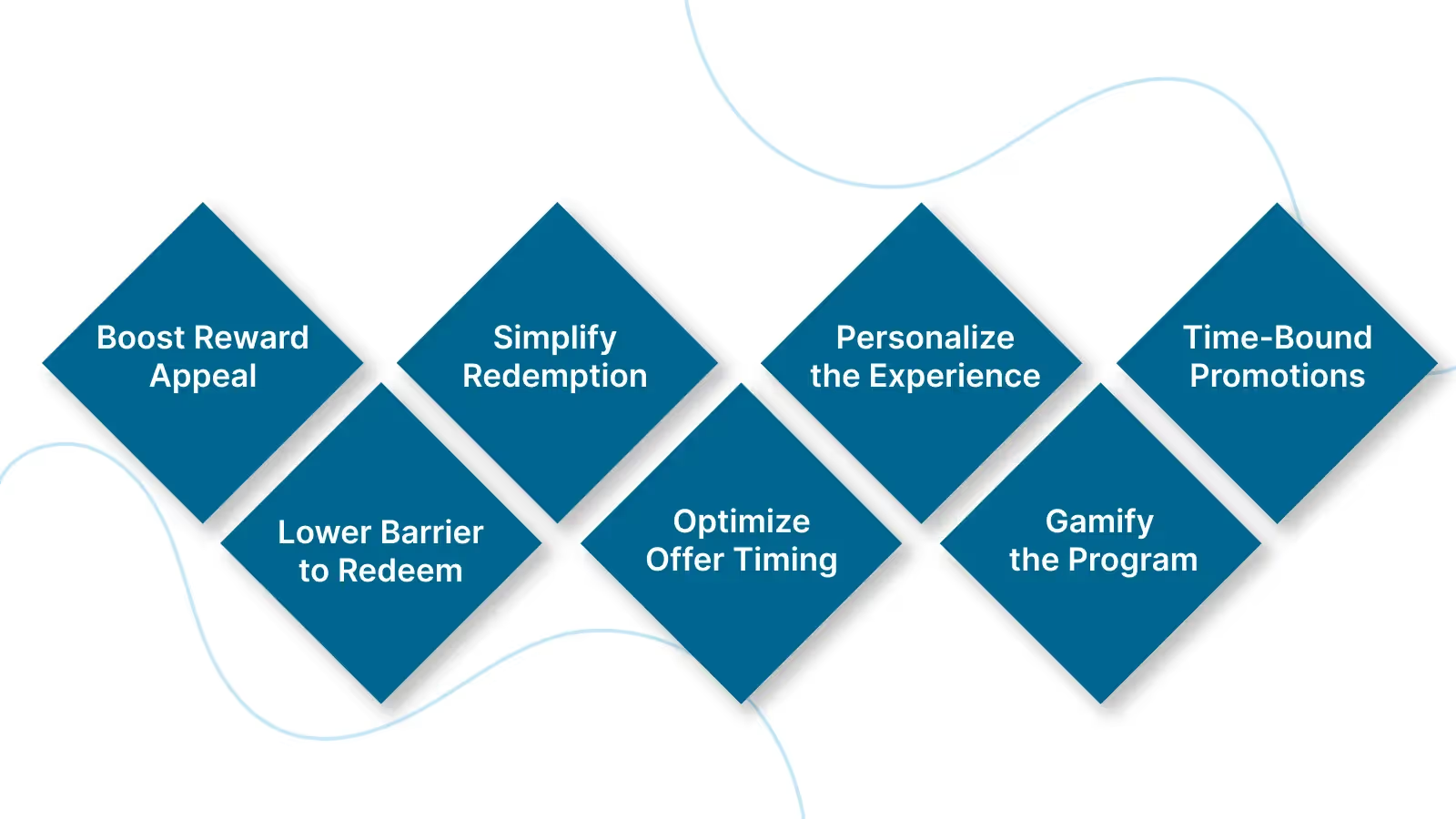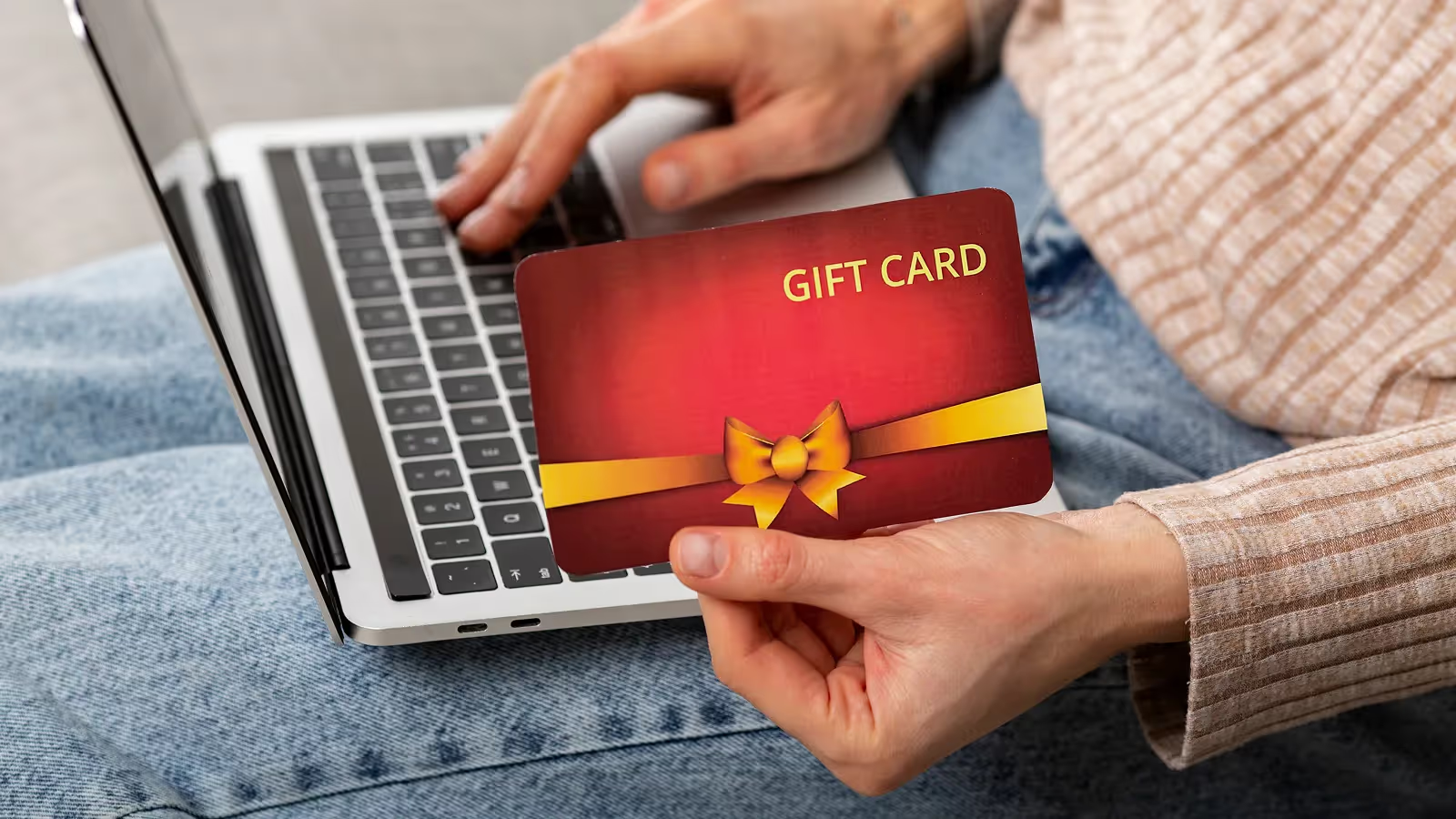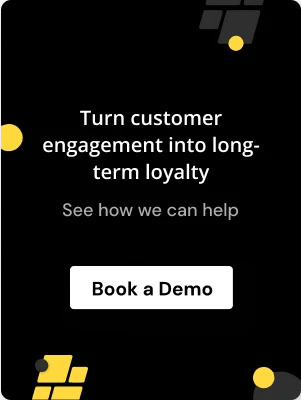.avif)
.avif)
You’ve launched a loyalty program that's running smoothly and customers are racking up all the points, but are they actually using them?
Redemption rate is one of the clearest indicators of whether your loyalty program is doing its job. It tells you if your customers find your rewards valuable enough to take action. Because when they do, it’s not just a feel-good moment but a proven driver of customer loyalty.
Studies show that boosting customer retention by even as little as 5 % can boost profits by a staggering 25 % to 95 %. So, ideally, you want your redemption rate to go up, as it is a good sign that your customers are actively engaging with your brand and choosing to stick around.
This guide will walk you through what the redemption rate really tells you, how to track it, and, most importantly, how to improve it with practical strategies that convert rewards into repeat customers and real revenue.
Why You Need to Track Redemption Rate
Running a loyalty program without tracking the redemption rate is like flying blind. You might know how many points are being issued, but without knowing how many are actually redeemed, you can’t measure if your program is truly working.
Redemption rate tells you if customers are just earning rewards or also engaging with them. A high rate signals that your offers are relevant and your customers are invested. It’s closely tied to increased purchase frequency, stronger customer lifetime value (CLV), and better overall retention.
On the flip side, a low redemption rate usually means missed opportunities. It might indicate that your rewards aren’t attractive, your thresholds are too high, or that customers simply don’t know how or when to redeem.
How to Calculate Redemption Rate
The formula is simple:
(Rewards Redeemed ÷ Rewards Issued) × 100
For example, if your store issued 5,000 reward points in a month and 1,000 points were redeemed in the same time period, your redemption rate would be 20% for that month.
This percentage gives you a clear snapshot of how effective your loyalty program is at driving action.
Average Redemption Rate for Loyalty Programs
84% of loyalty program members have made a redemption at some point, proving that when rewards are well-designed and accessible, customers do engage. That said, actual redemption activity can vary widely based on factors like your business model, reward structure, and how easy it is for customers to claim their benefits.
For example, a beauty brand offering free samples might see more frequent redemptions than a high-ticket electronics store. The key is to monitor your own program’s baseline and keep optimizing, whether that’s by improving reward visibility, simplifying redemption steps, or making the incentives more aligned with customer behavior.
To get there, you’ll need the right mix of reward design, timing, and customer experience. So, let's check out some core strategies to improve your redemption rate.
Also read: A Practical Guide to Effective Customer Retention Management
How to Improve Redemption Rate

Improving redemption rates includes a lot of tweaking and adjusting to make the redemption experience just right. When your program feels seamless and rewarding, customers are far more likely to engage. Let’s break down the most effective ways to turn unredeemed points into ongoing loyalty and repeat purchases.
Make Rewards Instantly Appealing
If your rewards don’t spark interest right away, customers won’t feel motivated to redeem. And while discounts are a staple, they’re not always enough.
To truly drive engagement, offer rewards that feel exciting and exclusive, like early access to new products, VIP-only drops, free gifts, or limited-time experiences. Tailor rewards to your audience’s preferences and seasonal trends.
The goal is to create that “I want this now” moment every time they check their point balance. When rewards feel fresh and desirable, redemption rates naturally climb, and customers keep coming back for more.
Read: The Psychology and Benefits of Rewards Programs: Boost Customer Loyalty & Business Growth
Lower the Barrier to Redeem
If rewards feel out of reach, customers are less likely to engage. Make it easier by offering entry-level rewards that require fewer points, like $5 or $10 off. This gives customers a quick win and builds momentum. You can also let shoppers redeem partial points at checkout or combine points with cash.
Don’t forget to show them how close they are to their next reward; it’s a small nudge that can drive big action. The easier it is to redeem, the more likely customers are to stay engaged and build a habit around your loyalty program.
Simplify the Redemption Process
Redemption should feel effortless, not like a chore. If customers have to jump through a lot of hoops, they’ll abandon the process entirely.
Make it easy with in-cart or one-click redemption options that don’t require logging in again or navigating to a separate page. Streamline the number of steps, minimize friction, and ensure the experience is smooth on both desktop and mobile.
The goal is to let customers redeem rewards at the same moment they’re ready to buy. A fast, intuitive process increases satisfaction and significantly boosts the chances of turning points into purchases.
Read: How to Increase Customer Loyalty and Recover Lost Sales
Optimize the Timing of Offers
Even the best rewards fall flat if the timing’s off.
Boost redemption by sending reminders when customers are most likely to act, like right before major sales, restocks, or product launches. Use behavioral cues too: trigger nudges after a wishlist add, product view, or cart abandonment to bring them back with a reward incentive.
Don’t underestimate the power of urgency either. Let customers know when their points are nearing expiration. Well-timed prompts not only increase redemptions but also reinforce your brand’s relevance at key decision-making moments.
Personalize the Experience
A personalized rewards experience feels more valuable and drives higher redemption.
Use customer data to recommend rewards based on past purchases or favorite categories. Highlight their point balance in email subject lines, website headers, or push notifications to keep it top of mind. You can also tailor rewards by loyalty tier or customer segment, like offering VIP perks to top spenders or bonus incentives to re-engage lapsed shoppers.
When customers feel like your loyalty program “gets” them, they’re far more likely to redeem rewards and keep interacting with your brand in meaningful ways.
Gamify the Program
Adding a layer of fun can dramatically boost engagement and redemption. Introduce gamified elements like loyalty tiers, unlockable rewards, or surprise bonuses that keep customers curious and motivated.
Visual tools like progress bars or point countdowns help build momentum and show how close customers are to their next reward. These small touches tap into the psychology of achievement and make your loyalty program feel less like a transaction and more like a game customers want to keep returning to.
Also read: Using Gamification to Enhance Referral Programs
Run Limited-Time Promotions
Give customers a reason to redeem now, not later. Offer weekly or one-time redeemable rewards that rotate often, such as exclusive vouchers or limited-edition items. You can also introduce time-bound partnerships with trending or high-demand brands to spark excitement and urgency.
These limited-time options keep your program feeling fresh and create FOMO that drives faster redemptions. When customers know that today’s reward might not be there tomorrow, they’re far more likely to act.
These strategies lay the foundation for a loyalty program that drives higher redemption and deeper customer engagement.
With a platform like Nector, Shopify brands can easily put these redemption-boosting strategies into action. Set up tailored rewards, automate personalized reminders, launch limited-time offers, and gamify the customer experience to turn your loyalty program into a powerful growth channel.
But before you start implementing these, it’s worth understanding the common pitfalls that can quietly drag your redemption rates down.
Common Mistakes to Avoid in Redemption Campaigns
Redemption campaigns can boost engagement and strengthen loyalty—but only if they’re executed well. Even well-meaning programs fall short when key details are overlooked. Here are some of the most common pitfalls that quietly reduce impact:
- Offering Rewards That Don’t Add Value
If your rewards aren’t relevant or feel too out of reach, customers will disengage. Whether it's the reward itself or the number of points needed, the offer needs to feel attainable and worth it. Think from the customer’s perspective: Would you spend time and money chasing it?
- Treating All Customers the Same
Generic campaigns don’t connect. Customers expect some level of personalization, be it based on their purchase history, behavior, or loyalty tier. A tailored offer not only feels more relevant but also shows that you’re paying attention.
Read: Shopify Customer Retention Strategies: Boost Loyalty and Drive Repeat Purchases
- Hiding the Rewards
Even the best-designed reward won’t perform if people don’t know it exists. If your redemption options are buried in an app submenu or tucked away in a rarely-sent email, you’re missing opportunities. Make redemption front and center, on-site, in emails, and wherever your users engage most.
- Poor Mobile Experience
Mobile is where a large share of redemptions happen. If your mobile site is slow, the redemption flow is clunky, or users have to log in multiple times, drop-off is almost guaranteed. A frictionless experience on mobile isn’t optional, it’s essential.
- Skipping Customer Feedback
If customers are telling you a reward is confusing, not valuable, or hard to access, listen. Feedback offers direct insight into what’s working and what’s not. Use it to refine your campaigns, not just reactively but as part of your ongoing optimization.
A great redemption campaign isn’t about flashy offers; it’s about clarity, simplicity, and customer relevance. When you get those right, redemption becomes a habit, not a hurdle.
Ready to build a loyalty program that drives retention? What you need next is the right tool that can help you design, manage, and optimize every aspect of your program without the guesswork.
Turn Engagement into Growth with Nector

Nector helps Shopify brands build loyalty programs that keep customers engaged. By making every interaction valuable and every reward easy to access, the platform helps design a rewarding loop that customers enjoy tapping into, driving measurable ROI for your store.
Here’s what you can do with Nector:
- Reward More Than Just Purchases: Let customers earn coins for referrals, reviews, social follows, and other meaningful actions.
- Make Redemption Effortless: Offer coins for discounts, free shipping, or full products. On Shopify Plus, enable coin redemption right at checkout with real-time savings calculation.
- Gamify Loyalty: Add tiers, challenges, and progress-driven incentives to boost engagement over time.
- Run Timed Campaigns: Launch high-reward events during holidays or product drops to spark urgency and increase conversions.
- Boost On-Site Engagement: Use in-page nudges to encourage point redemption or earning, reducing drop-offs and cart abandonment.
The results speak for themselves. One leading sports merchandise brand partnered with Nector to power its loyalty program and saw a 32x return on investment, alongside a 7% effective redemption rate. The program didn’t just retain existing customers but actively drove sales, with 12.5% of all signups coming directly through the loyalty program.
If you’re ready to turn loyalty into lasting revenue, Nector gives you the tools to build a program your customers will actually use and love.

Wrapping Up
Redemption rates are one of the clearest signals of whether your loyalty program is working. By tracking the right metrics, avoiding common pitfalls, and implementing tried-and-tested strategies, you can turn your loyalty program into a true growth engine.
If you’re looking for a solution that makes all of this easy to implement, Nector has you covered. From flexible reward systems to smooth redemption experiences and data-driven insights, Nector allows Shopify brands to build loyalty programs that boost engagement, increase ROI, and keep customers coming back.
Ready to improve your redemption rates? Book a demo with Nector and start building a loyalty experience that drives customer retention.
FAQs
What is a redemption rate?
Redemption rate is the percentage of loyalty rewards that your customers actually use, compared to how many you've issued. It's a key metric that shows how well your loyalty program is driving engagement and influencing purchase behavior.
What is a good redemption rate?
For most e-commerce brands, a redemption rate between 20–30% is considered strong. Programs that offer relevant rewards, easy redemption, and consistent communication tend to see deeper customer engagement and better overall performance.
Why does redemption rate matter for my store?
Redemption rate isn’t just a vanity metric. It shows whether your loyalty program is actually motivating customer behavior. A higher rate means your rewards are enticing enough to bring shoppers back and drive repeat sales.
Start Building Customer Retention That Lasts









